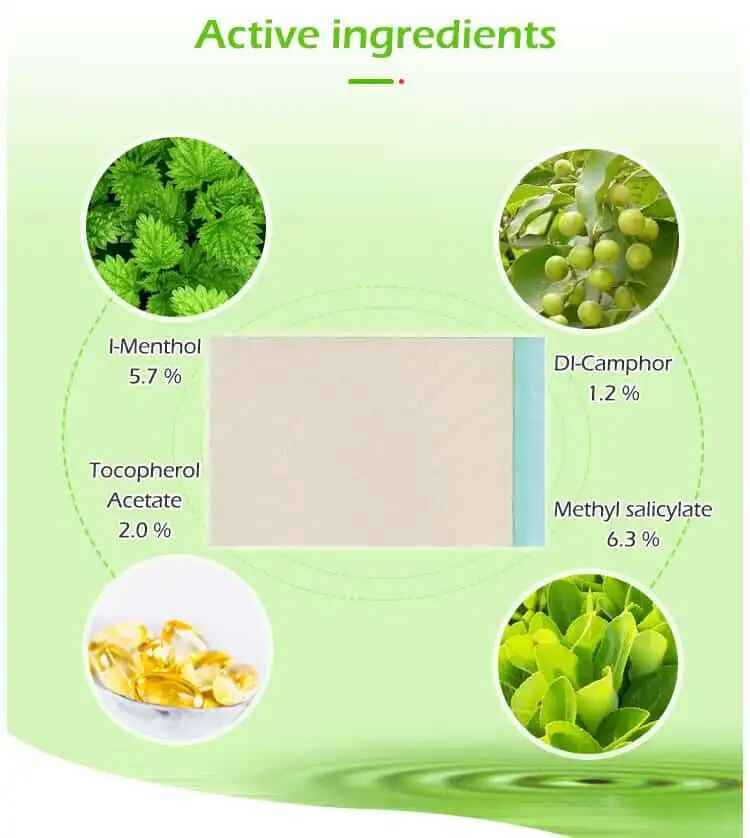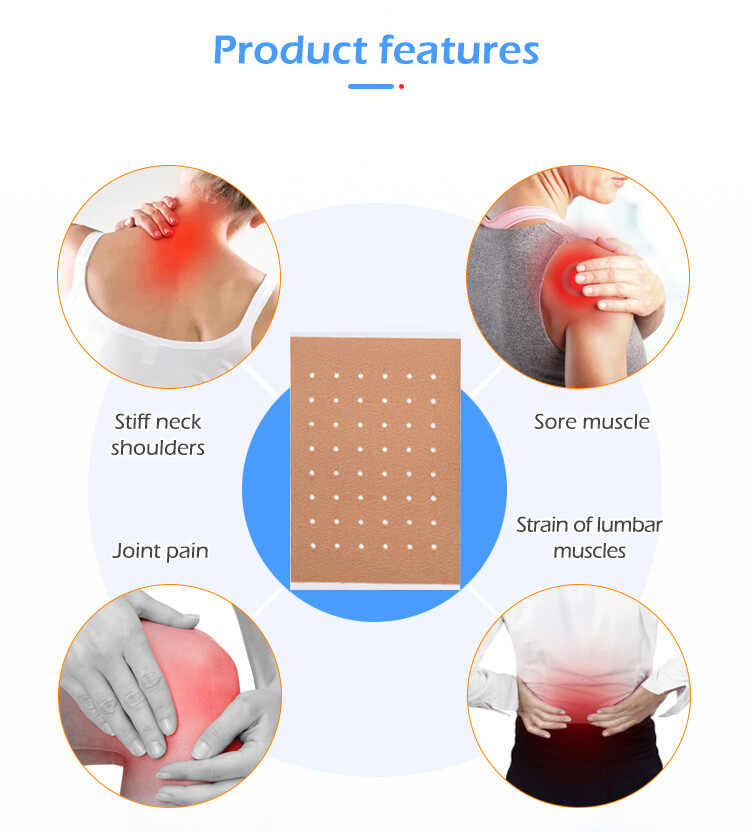Compliance Standards for Chronic Pain Patches OEM Products in B2B Markets
As the global demand for non-invasive pain management continues to rise, Chronic Pain Patches OEM solutions are becoming a preferred product line in the B2B health and wellness sector. However, launching Custom Chronic Pain Patches or Private Label Chronic Pain Patches in any regional or international market is not just about innovative formulations and packaging—compliance with local and international regulations is critical.

For B2B buyers, distributors, and brand owners, understanding compliance standards is essential for mitigating legal risk, protecting consumers, and ensuring long-term market success. This article explores the key compliance requirements that every Chronic Pain Patches Manufacturer, Chronic Pain Patches Supplier, and brand partner must adhere to when developing and distributing OEM products.
1. Why Compliance Matters in Chronic Pain Patches OEM Manufacturing
Compliance in OEM (Original Equipment Manufacturing) refers to ensuring that the Custom Chronic Pain Patches meet the legal, safety, and efficacy standards required by regulatory bodies in different countries or regions.
Non-compliance can lead to:
Product recalls
Import/export bans
Brand reputation damage
Fines or legal liability
A responsible Chronic Pain Patches Manufacturer will not only produce high-quality patches but also ensure that every aspect of production—formulation, labeling, documentation, and safety—aligns with the requirements of target markets.
2. Key Regulatory Frameworks for Chronic Pain Patches OEM Products
a. FDA (U.S. Food and Drug Administration)
If you plan to sell in the United States, Chronic Pain Patches may be classified under:
OTC Drug Monograph (e.g., lidocaine or menthol patches)
NDAs (New Drug Applications) for innovative formulations
Medical Device classification for non-drug, pain-relieving patches (e.g., heat patches)
Requirements include:
GMP (Good Manufacturing Practice) certification
Active ingredient limits and permitted claims
Clear Drug Facts Labeling for Private Label Chronic Pain Patches
Clinical data if required
A compliant Chronic Pain Patches OEM must have experience working under FDA scrutiny and provide all documentation such as:
Ingredient specs
MSDS (Material Safety Data Sheets)
COA (Certificates of Analysis)
Batch release records
b. EU MDR (Medical Device Regulation)
For products distributed in Europe, the EU MDR may classify Chronic Pain Patches as Class I or IIa medical devices, depending on the mechanism of action.
Compliance involves:
CE marking
Risk classification analysis
Clinical evaluation reports
Post-market surveillance plans
Technical files and labeling in multiple languages
A qualified Chronic Pain Patches Supplier should offer CE-ready documentation and support throughout the notified body audit process.
c. ISO 13485 Certification
This international standard governs quality management systems for medical devices and related products, including many types of Chronic Pain Patches.
A Chronic Pain Patches Manufacturer that is ISO 13485 certified:
Ensures traceability of every material and process
Adheres to rigorous documentation controls
Has validated processes for cleanliness, adhesion, and dosage control
Offers consistent product quality across batches
ISO 13485 certification is a key indicator of OEM reliability in B2B markets.
d. TGA (Australia), Health Canada, SFDA (China), and Others
Depending on where you plan to distribute your Private Label Chronic Pain Patches, additional compliance is needed:
TGA (Australia): Requires ARTG listing and GMP evidence
Health Canada: Mandates DIN or NPN, bilingual labeling, and testing
SFDA (China): Strict clinical efficacy requirements and domestic agent for registration
A globally competent Chronic Pain Patches OEM will have a regulatory affairs team familiar with these international standards and can assist with the required dossier compilation.
3. Core Compliance Areas in Chronic Pain Patches OEM Development
a. Ingredient Compliance and Labeling
A top-tier Chronic Pain Patches Supplier ensures that all ingredients:
Are approved in the target country
Do not exceed concentration limits
Are supported by relevant clinical data
Labeling must include:
Active and inactive ingredients
Usage instructions
Contraindications and side effects
Regulatory warnings (e.g., “for external use only”)
b. Stability and Shelf-Life Testing
Custom Chronic Pain Patches must undergo:
Accelerated stability tests (e.g., 40°C / 75% RH for 6 months)
Real-time stability assessments
OEMs must determine:
Expiry dates
Storage conditions
Packaging resilience
This ensures that Private Label products retain efficacy and safety through distribution and retail.
c. Skin Irritation and Sensitivity Testing
Skin contact products like Chronic Pain Patches must be non-irritating and hypoallergenic. OEMs should provide:
Patch test results
Dermatologist certification
Consumer use studies
These results should be documented in the product's safety file and can be used to support marketing claims.
d. Batch Traceability and Quality Control
Full traceability is non-negotiable for compliance. A certified Chronic Pain Patches Manufacturer must:
Record all batch numbers, raw materials, and suppliers
Provide batch-specific COAs and QC data
Maintain a recall protocol
This is particularly important for Custom Chronic Pain Patches with varying active ingredients or herbal extracts.
e. Packaging and Import Compliance
Packaging compliance includes:
Tamper-evident seals
Child-resistant packaging (if required)
Instructions and warnings in official languages
EAN barcoding and serialization (for tracking)
Your Chronic Pain Patches OEM must be able to produce compliant packaging for each market.
4. OEM Responsibilities in Ensuring B2B Compliance
Your OEM partner is critical in maintaining compliance throughout the product lifecycle. A trustworthy Chronic Pain Patches OEM should:
Provide detailed Product Information Files (PIF)
Assist in registration or notification procedures
Offer regular updates on regulation changes
Deliver validated production and testing data
Support post-market surveillance efforts
In B2B transactions, where volumes and risk are higher, having an OEM that shares responsibility for compliance is a significant asset.
5. Documentation a Chronic Pain Patches Supplier Should Provide
Before proceeding with a Private Label Chronic Pain Patch or Custom Chronic Pain Patch project, ensure the OEM can deliver the following:
ISO 13485 and GMP certifications
Full formulation and ingredient list
Safety Data Sheets (MSDS)
Certificates of Analysis (COA)
Stability test reports
Microbiological test reports
Clinical or performance test data
CE/FDA registration documents (if applicable)
Product labels and packaging proof
This documentation safeguards your brand from legal, financial, and operational risks.
6. Questions to Ask Your Chronic Pain Patches OEM Partner
Before finalizing an OEM partnership, ask:
Do you have ISO 13485 and GMP certifications?
Are your products registered with the FDA, CE, or local health authorities?
Can you support me with regional-specific labeling?
What is your process for managing recalls or product complaints?
How do you ensure traceability and quality control in batch production?
Only proceed with a Chronic Pain Patches Manufacturer that can answer these confidently and provide evidence.
7. Consequences of Non-Compliance in B2B Markets
Non-compliance with regulatory requirements can have serious consequences, including:
Seizure of products at customs
Delisting from online and retail platforms
Brand damage and lawsuits
Product liability insurance issues
Inability to secure repeat business from retailers
A certified Chronic Pain Patches Supplier mitigates these risks and strengthens your market reputation.
Conclusion
In the highly regulated world of health and wellness, compliance is not optional—it's foundational. Whether you're a global distributor or an emerging brand, working with a qualified Chronic Pain Patches OEM that adheres to FDA, CE, ISO, and other international standards is critical for success.
From formulation to documentation, labeling to packaging, your Chronic Pain Patches Manufacturer should be your compliance partner—not just a production vendor. Investing in a compliant supply chain sets your business up for long-term growth, legal safety, and consumer trust.
Related Questions and Short Answers
Q1: Are Chronic Pain Patches considered drugs or medical devices?
A: It depends on the ingredients and mechanism of action. In some countries, they're OTC drugs (e.g., lidocaine patches), while in others, they’re classified as medical devices.
Q2: Do I need to register Private Label Chronic Pain Patches in each country?
A: Yes. Each market has its own requirements. Your OEM should assist with documentation and registration processes.
Q3: What certifications should a Chronic Pain Patches OEM have?
A: ISO 13485, GMP compliance, and if applicable, FDA registration and CE marking.
Q4: Can I use my own formulation for Custom Chronic Pain Patches?
A: Yes, if the ingredients comply with local regulations. The OEM will test and validate the formulation.
Q5: How long does compliance testing take before I can launch?
A: Depending on region and product complexity, 2–6 months including documentation, stability tests, and possible registration approvals.
Q6: What happens if my Chronic Pain Patch causes an allergic reaction in users?
A: A compliant OEM will have conducted skin irritation testing, but you must also follow a product complaint and recall procedure outlined in your post-market plan.
Q7: Does compliance guarantee market success?
A: Not alone—but it ensures you’re legally allowed to sell, which is a critical first step in entering competitive B2B markets.






